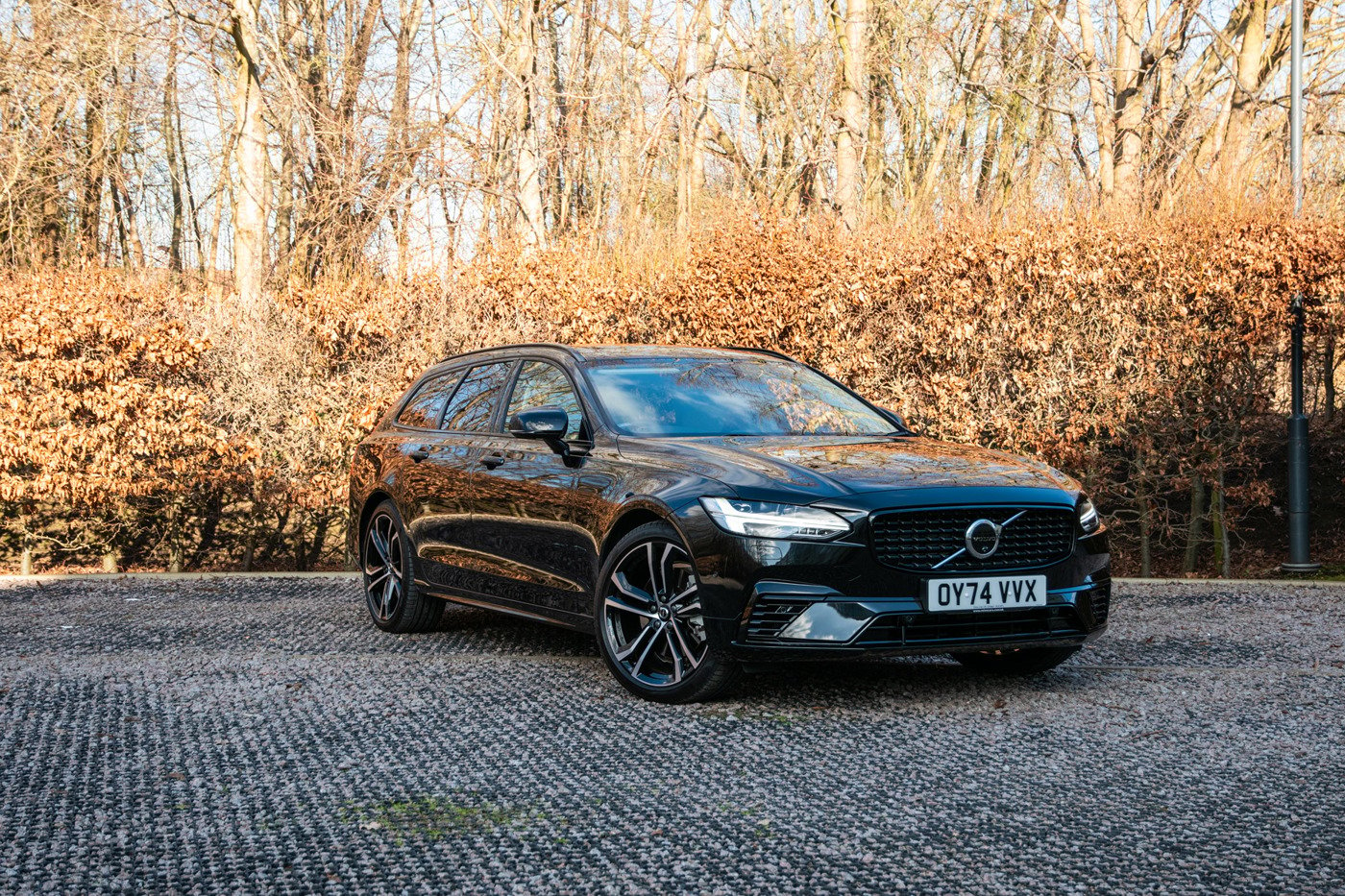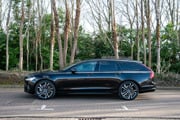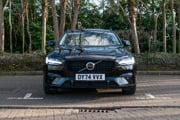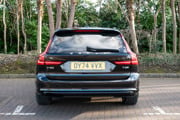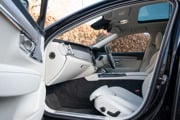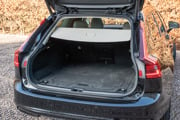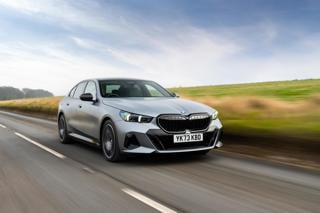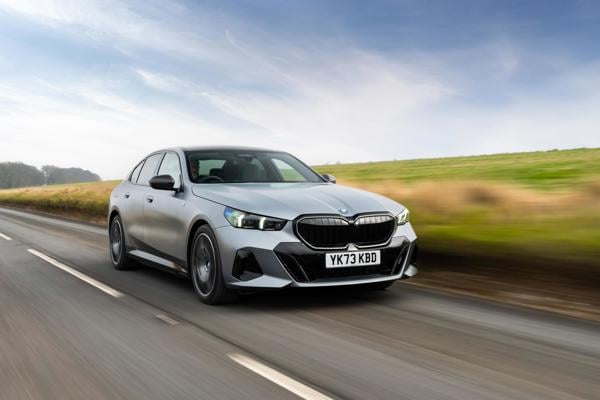Review
No brand has quite the same attachment to estate cars as Volvo. For more than 70 years the company has churned out boxy wagons with global appeal.
It all started with the PV444, in 1953, although this was based on a commercial vehicle chassis. The V90’s bloodline starts with the 1962 Amazon Estate, a car-based model designed to appeal to families.
Since then, Volvo estates have retained the same squared-off proportions making them ideal for load-lugging.
But, Volvo isn’t the only premium car maker with estates in its line-up these days and the V90 has two keen rivals: the BMW 530e Touring and the Mercedes E300e Estate.
The V90 starts on the back foot. That’s because both its competitors are much newer. The V90 might’ve only recently gone back on sale, but it’s pretty much the same car that launched in 2017.
A key difference is in battery capacity. While Volvo has expanded the V90 battery in recent years, at 14.9kWh (useable) it’s still the smallest of the three. The BMW manages 19.7kWh, while Mercedes almost matches it at 19.5kWh.
The Mercedes has the longest claimed range, at 67 miles, while the BMW promises 57. Our V90 has an official range of 52 miles.
That hurts the official fuel consumption figure and, therefore, the fuel cost element of the car’s overall running cost.
Of course, in practice, the economy achieved is largely dictated by journey profile, frequency of charging at driving style. In the real world, the V90 is averaging 42mpg.
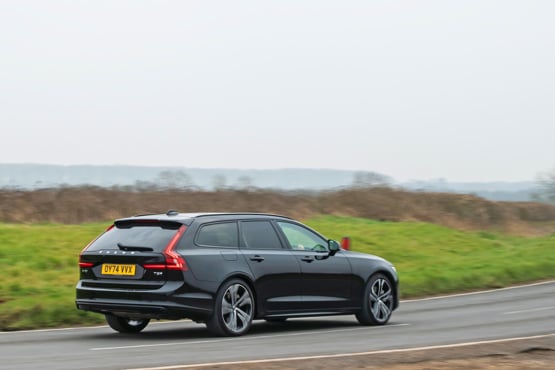
With a similar specification the BMW and Volvo cost around the same at £69,550 for the 530e M Sport with Tech and Comfort packs. The Volvo is £70,725 in Ultra guise, while the Mercedes costs the most at £78,805 for the E300e Premium Plus.
Fleet News Running Cost data from Cap HPI shows the V90 sits mid-table when it comes to running costs, with a 72p per mile estimation over four years and 80,000 miles. The BMW is the most cost-effective model, costing 68p per mile. That is largely driven by it having the strongest residual value. The Mercedes has an estimated running cost of 77p per mile with the strongest depreciation and the largest SMR costs. Fuel costs for the Mercedes are the lowest, however.
When it comes to carrying capacity, the BMW also tops the chart. It has a maximum load volume of 1,700 litres. That’s 50 litres more than the Mercedes and 183 litres more than the Volvo.
The V90 claws back some serious points when it comes to powertrain, however. While the BMW makes do with 299PS and the Mercedes 313PS, the Volvo’s 455PS output puts it in a different league. The V90 is also the only model to have all-wheel-drive, a useful addition in winter months. As such, the Volvo can accelerate from 0-62mph almost two seconds quicker than the BMW. Even the lower-powered V90 T6 has a performance advantage over the BMW and Mercedes and that car is available at a much more compelling price point.
Both the BMW and the Mercedes are highly technical and impressive cars. The E300e seems unnecessarily expensive, but the 530e is a valid rival – especially when it comes to outright space. It’s just a lot slower than the Volvo.
Volvo V90 T8 Ultra joins our fleet
Volvo hasn’t shied away from making some pretty bold commitments in order to innovate. After moving away from diesel engines before the rest of the market, it was one of the first car makers to outline plans to become a fully electric brand.
More recently, in 2023, Volvo UK made the slightly more obscure announcement that it would become an SUV-only brand. That meant the S- and V60, along with the S- and V90 saloons and estate were removed from its line-up.
Automotive trends have a habit of changing pretty quickly, however, and - credit to Volvo - it recognised that 2030 might be a little early to completely kill off cars with internal combustion engines. As such, the XC60 and XC90 have received a new lease of life, via a facelift, and will continue as plug-in hybrids until 2035.
Equally, demand for estate cars has proven stronger than Volvo first thought. Especially in the fleet sector. The V60 and V90 were therefore re-instated in late 2024.
A certain Fleet News staff writer was at the front of the queue to ask for one of the revived models, having been disheartened at the brand’s earlier decision to pull them from sale.
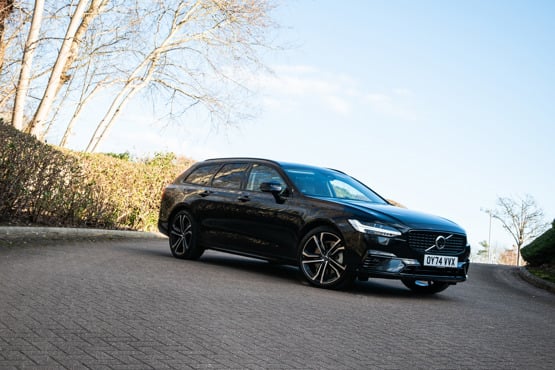
So, I’m very pleased to introduce OY74 VVX – one of the very first ‘new’ V90s to land in the UK.
The V90 never completely went away, of course. Production remained for other markets and the UK police were also still able to get hold of them. So, the re-instated model isn’t any different to the one that came before.
A streamlined model range is available. Essentially you can have the V90 Plus, which comes with a ‘T6’ powertrain, or the V90 Ultra. The latter, which is what we chose, is paired with a more powerful T8 powertrain.
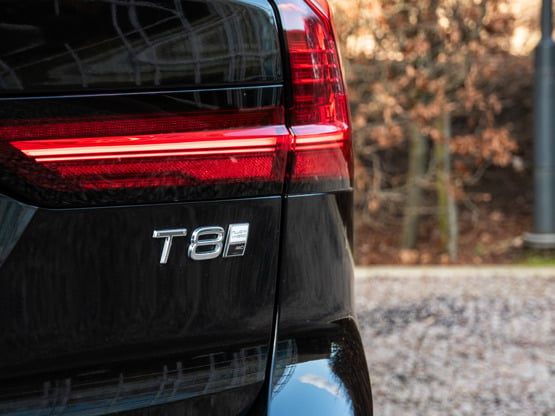
Both engines are technically the same. The T6 has 350PS, while the T8 produces 455PS. Only software separates the two. They both have a 2.0-litre petrol engine that is both turbocharged and supercharged, powering the front wheels through and eight-speed automatic gearbox. The rear axle is powered by an electric motor
An 18.8kWh battery, nestled in the centre of the car, provides a zero-emission range of up to 55 miles – enough to secure a 9% benefit-in-kind tax rate (2025/26).
The V90 line-up starts at £62,280, while our Ultra model commands £70,780.
The standard specification list is extensive and all models get heated front and rear seats, a 360-degree camera system, keyless entry, a power operated tailgate and Volvo’s Pilot Assist package.
Stepping up to Ultra gains adaptive headlights, adaptive suspension, a head-up display, a panoramic sunroof and a Bowers & Wilkins sound system.
Optional equipment is limited to nappa leather, instead of standard leather, which also brings ventilated front seats. We ticked that box, opting for the ‘blonde’ colour scheme. That was an extra £1,500, along with the Onyx Black paint at £785.
How can I describe the V90 after a few weeks behind the wheel? Splendid. It’s absolutely splendid.
Specs
| Manufacturer | Volvo |
| Model | V90 Estate |
| Specification | Volvo V90 Estate 2.0 T8 [455] PHEV Ultra Dark 5dr AWD Auto |
| Model Year | 2024.00 |
| Annual VED (Road tax) | £0 |
| BIK List Price | £70,725 |
| Range | 52.20mile(s) |
| CO2 | 20g/km |
| BIK Percentage | 8% |
| Insurance Group | N/A |
| CC | 1,969 |
| Fuel Type | Petrol Parallel PHEV |
| Vehicle Type | Large car |
| Luggage capacity (Seats up) | 551litres |
| Doors | 5 |
Running Costs
| P11D | £70,725 |
| Cost per mile | 85.42ppm |
| Residual value | £23,975 |
| Insurance group | N/A |
| Fuel Type | Petrol Parallel PHEV |
| Cost per mile | 355.56ppm |
| Fuel | 2.13ppm |
| Depreciation | 350.05ppm |
| Service maintenance and repair | 3.38ppm |
Rivals
Info at a glance
-
P11D Price
£70,725
-
MPG
313.4 (WLTP) -
CO2 Emissions
20g/km -
BIK %
8% -
Running cost
3 Year 60k : £23,975 4 Year 80k : £19,575 -
Fuel Type
Petrol Parallel PHEV -
Range
52.20mile(s)



